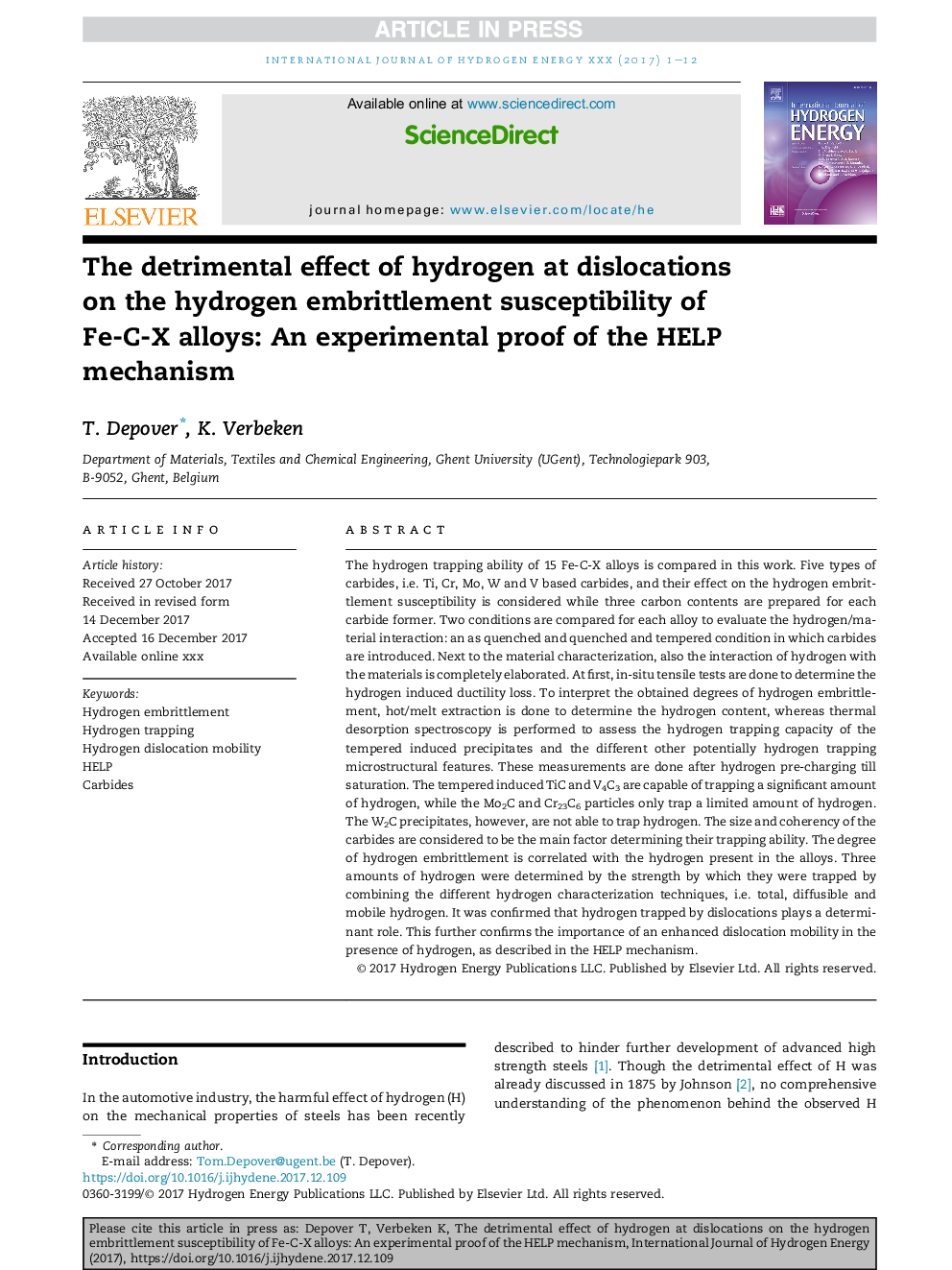| کد مقاله | کد نشریه | سال انتشار | مقاله انگلیسی | نسخه تمام متن |
|---|---|---|---|---|
| 7708121 | 1497320 | 2018 | 12 صفحه PDF | دانلود رایگان |
عنوان انگلیسی مقاله ISI
The detrimental effect of hydrogen at dislocations on the hydrogen embrittlement susceptibility of Fe-C-X alloys: An experimental proof of the HELP mechanism
دانلود مقاله + سفارش ترجمه
دانلود مقاله ISI انگلیسی
رایگان برای ایرانیان
کلمات کلیدی
موضوعات مرتبط
مهندسی و علوم پایه
شیمی
الکتروشیمی
پیش نمایش صفحه اول مقاله

چکیده انگلیسی
The hydrogen trapping ability of 15 Fe-C-X alloys is compared in this work. Five types of carbides, i.e. Ti, Cr, Mo, W and V based carbides, and their effect on the hydrogen embrittlement susceptibility is considered while three carbon contents are prepared for each carbide former. Two conditions are compared for each alloy to evaluate the hydrogen/material interaction: an as quenched and quenched and tempered condition in which carbides are introduced. Next to the material characterization, also the interaction of hydrogen with the materials is completely elaborated. At first, in-situ tensile tests are done to determine the hydrogen induced ductility loss. To interpret the obtained degrees of hydrogen embrittlement, hot/melt extraction is done to determine the hydrogen content, whereas thermal desorption spectroscopy is performed to assess the hydrogen trapping capacity of the tempered induced precipitates and the different other potentially hydrogen trapping microstructural features. These measurements are done after hydrogen pre-charging till saturation. The tempered induced TiC and V4C3 are capable of trapping a significant amount of hydrogen, while the Mo2C and Cr23C6 particles only trap a limited amount of hydrogen. The W2C precipitates, however, are not able to trap hydrogen. The size and coherency of the carbides are considered to be the main factor determining their trapping ability. The degree of hydrogen embrittlement is correlated with the hydrogen present in the alloys. Three amounts of hydrogen were determined by the strength by which they were trapped by combining the different hydrogen characterization techniques, i.e. total, diffusible and mobile hydrogen. It was confirmed that hydrogen trapped by dislocations plays a determinant role. This further confirms the importance of an enhanced dislocation mobility in the presence of hydrogen, as described in the HELP mechanism.
ناشر
Database: Elsevier - ScienceDirect (ساینس دایرکت)
Journal: International Journal of Hydrogen Energy - Volume 43, Issue 5, 1 February 2018, Pages 3050-3061
Journal: International Journal of Hydrogen Energy - Volume 43, Issue 5, 1 February 2018, Pages 3050-3061
نویسندگان
T. Depover, K. Verbeken,